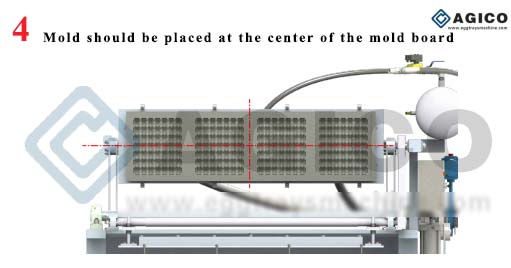Definition of Egg Trays and their Importance in the Packaging Industry
Egg trays are specialized packaging products used for safely transporting eggs from farms to retail stores and homes. They are primarily made of paper pulp and are biodegradable, making them an eco-friendly packaging solution. Egg trays come in different sizes and shapes, with the most common being those that hold 30 eggs.
Egg trays are essential in the packaging industry because they provide a protective casing for eggs during transportation, preventing damage and breakage. They also ensure the eggs are organized in a way that makes it easy to count and track inventory, making them highly suitable for commercial egg producers.
Overview of Egg Tray Production Process
The process of producing egg trays involves several stages, including pulping, molding, drying, and packaging. The raw materials used in egg tray production are primarily waste paper, including newspapers, cartons, and corrugated boxes.
The first step in the egg tray production process is the pulping of waste paper. This involves soaking the paper in water until it disintegrates and forms a pulp. The pulp is then passed through a series of screens to remove any impurities before being transferred to a molding machine.
In the molding machine, the pulp is molded into the desired shape of the egg tray before being transferred to a drying oven. The drying oven dries the egg trays to remove any moisture before they are packaged and sent for use.
Factors Influencing the Project Cost of Egg Tray Production
- Equipment and Machinery Costs The cost of equipment and machinery for egg tray production is a significant factor that affects the project cost. The type of equipment required for egg tray production depends on the scale of production, with larger-scale production requiring more sophisticated and expensive machinery.
- Raw Material Costs Raw materials used in egg tray production, such as waste paper, chemicals, and water, are another significant cost factor. The cost of raw materials can vary depending on factors such as availability, quality, and location.
- Labor Costs Labor costs are another factor that significantly impacts the project cost of egg tray production. The number of workers required depends on the scale of production, and labor costs can vary depending on the location and skill level of the workforce.
- Energy and Utilities Costs The cost of energy and utilities, such as electricity and water, used in the egg tray production process can significantly impact the project cost. The cost of energy and utilities can vary depending on factors such as location, market rates, and efficiency.
- Transportation and Logistics Costs Transportation and logistics costs are incurred when transporting raw materials to the production facility and transporting finished egg trays to customers. The cost of transportation and logistics can vary depending on factors such as distance, mode of transportation, and fuel costs.
How to Calculate the Project Cost of Egg Tray Production
Breakdown of Costs by Category To calculate the project cost of egg tray production, it is essential to break down the costs by category, including equipment and machinery costs, raw material costs, labor costs, energy and utilities costs, and transportation and logistics costs.
Identifying Cost Drivers and Minimizing Expenses To reduce the project cost of egg tray production, it is crucial to identify the cost drivers and implement measures to minimize expenses. For instance, reducing raw material waste, increasing the efficiency of the production process, and implementing energy-saving measures can help lower costs.
Estimating Production Output and Revenue To calculate the project cost of egg tray production accurately, it is essential to estimate the production output and revenue. This involves estimating the number of egg trays produced and the price at which they will be sold.
Strategies for Reducing the Project Cost of Egg Tray Production
Adopting lean manufacturing principles
Lean manufacturing principles can help egg tray manufacturers reduce costs by streamlining production processes and eliminating waste. One way to achieve this is by implementing the 5S methodology, which involves sorting, setting in order, shining, standardizing, and sustaining. This helps to create a more efficient and organized workspace, leading to increased productivity and reduced costs.
Optimizing the production process
Optimizing the egg tray production process can help to reduce costs by minimizing downtime and maximizing output. This can be achieved through a variety of means, such as ensuring that equipment is properly maintained and calibrated, using automation where possible to reduce manual labor, and implementing a just-in-time production system to minimize excess inventory.
Implementing cost-saving measures in raw material sourcing
The cost of raw materials is a significant factor in the overall project cost of egg tray production. To reduce this cost, manufacturers can explore various cost-saving measures, such as sourcing materials from local suppliers to minimize transportation costs, negotiating better prices with suppliers through bulk purchases, and using alternative raw materials that are more affordable and readily available.
Improving energy efficiency
The energy used in egg tray production is a significant cost factor that can be reduced by improving energy efficiency. Manufacturers can achieve this by investing in energy-efficient equipment and machinery, optimizing the production process to reduce energy waste, and implementing a monitoring system to track energy consumption and identify areas for improvement.
